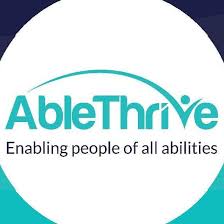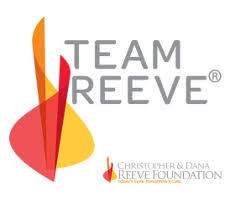 (This blog tells my family's story. To see more, click "blog" at the top of this webpage.) Beth’s second year of high school would hold different challenges than the first. When she started her sophomore year, sixteen months after her injury, I could get through the days without crying in front of anyone, a victory of sorts. “My small group of really close friends in high school helped me in many ways,” Beth said, “including breaking my leg spasms and carrying my book bag. By the second year I had those things under control, but a friend continued to sit by me in class only because it was more fun that way.” I took a short cut through the school cafeteria on September 11th at lunchtime and paused by a strange crowd of silent students in front of the television screen. It took only a moment to get my first glimpse of unthinkable tragedy. I rushed to the locker room, relieved to find Beth and Maria waiting for me. Hugged close and safe, for the moment. I grieved with the nation, overwhelmed by the scale of the losses and the faces of children who would never grow up. My worst-case scenarios amplified after 9/11. Terrorism took on a life of its own in my mind, growing and mutating into an on-going and imminent threat. I tried to tap down the fear by storing bottled water in the basement and packing an emergency duffle bag. I wrote phone numbers and a meeting place on a small rectangle of paper, copied and laminated for each member of my immediate family to carry in their wallet. An article that I read caused me more worry, about the terrible knowledge that nuclear weapons had already been used in the past, and might be used again. My heightened fears grouped nuclear weapons with terrorism and a deadly virus. Toxic chemical spills were a high risk in Ohio with the heavy truck traffic. And a personal, selfish anxiety about any number of alarming events that could restrict prescription drugs; I was acutely aware of my addictions with antidepressants and pain medicine (not opiods, thankfully). Who would I be without the prescriptions? How would I help Beth? The very worst part of my anxiety was feeling helpless—powerless, useless—to protect my family. My counseling sessions after 9/11 were more emotional. My psychologist patiently explained to me that widespread catastrophe would be highly unlikely, as though that would comfort me. The tragedy of 9/11 had been unlikely. Our car accident and Beth's injury had been unlikely, too. I really (really) wanted to be optimistic, and picked up books at the library with positive messages. I wished that getting rid of anxiety could be as simple as just choosing not to worry. Just choosing to have hope. When Beth asked to go to the YMCA a few times a month, I read books on the pool deck while she moved on her back with her arms waving slowly underwater. I no longer needed to watch continually for her head dipping too long under the water. When I drove to Green Springs after school for physical therapy, Laraine encouraged her to keep swimming. Though technically, she was floating. I joined Beth in the water one Sunday at her request. She wanted to try the backstroke. The effort to rotate her arms out of the water caused her to sink. I splashed my face to hide my tears as I lifted her up. We had no way of knowing that the backstroke would be her fastest swim stroke.
4 Comments
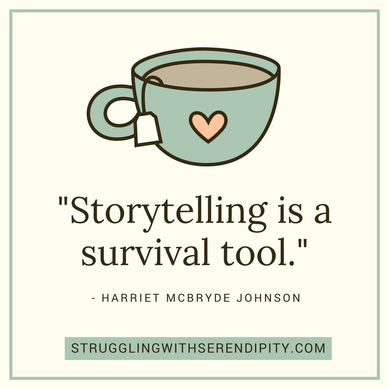 (This blog tells my family's story. To see more, click "blog" at the top of this webpage.) During Beth’s first summer vacation at home with a spinal cord injury, she focused on time with friends. We rode with another mom in her van full of excited teenagers to an N’Sync concert in Michigan, with the words “PopOdyssey N’Sync” in bright paint on the back window. Near Detroit, a traffic jam on I-75 turned into a party. Girls blared music, waved signs, and shouted to each other across the highway lanes. That might have been fun except for temperatures in the 90’s with high humidity. The van had no air conditioning and there was no breeze as we inched along. Beth flushed with fever, her body unable to sweat to cool down. I carried Tylenol, but nothing to drink it down with since we didn’t anticipate the traffic jam. I encouraged her to take it without water, but she wanted to wait. Approaching the stadium, I frantically waved the handicapped-parking placard out the window at the traffic cop to avoid another jam of cars. Finally parked, I hurried Beth out of the van to the first drink stand for cold bottled water. She took the Tylenol and drank extra water before we found our seats. In shade, Beth felt better before long and danced with her friends. They watched Justin Timberlake, the 20-year-old who stole the show in the pulsing lights on the stage. Our summer comings and goings confused Beth’s high-strung African Gray parrot. He plucked out feathers and injured his skin. A vet put a plastic cone around his neck, making him more miserable. We wondered if Timber had been taken from his parents too soon, and a friend recommended a bird sanctuary in Cleveland. Whether it was my fault or not, the parrot toddler needed more help than we could give. I drove him to the sanctuary, which included an extensive outdoor aviary with dozens of birds. Beth and I cried when we said goodbye to Timber, but we were glad to hear that he recovered quickly, delighted in his new home. Early on an August Saturday, firemen lifted Beth in her wheelchair onto a boat at a Sandusky pier on the Lake Erie shore. I skipped the fishing part of the Fishing Without Boundaries event. When the boats returned, I heard about how Beth caught more perch and walleye than her dad. The boat’s young first mate watched three fishing poles and handed one to her whenever he had a nibble. She reeled in about two dozen fish and let someone else take the fish off the hook. A friendly crowd gathered for a picnic near the docks. A mom told me how children at school made fun of her daughter, who grew up feeling like a victim. A dad shared his ongoing battle with pressure sores, reminding me of an article I read about a woman who had both legs and part of her trunk amputated because of pressure sore infections. Surrounded by the perspective of significant disability, I understood the mental argument that I should be happy and grateful. I was grateful. I could get through most days without crying, and yet... ...part of me sludged through guilt that felt like grief. ...through depression and anxiety that made me afraid of the future. Catastrophes seemed to be waiting in the wings, for Beth, for me, for the rest of our family, for our friends, and for the world. I listened to Beth laugh with the other teenagers and wondered if she could avoid depression entirely. 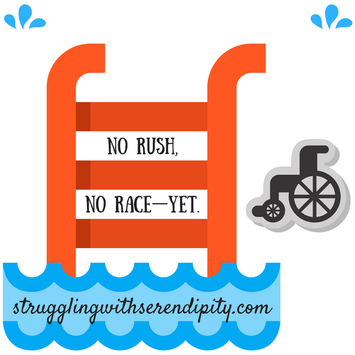 (This blog tells my family's story. To see more, click "blog" at the top of this webpage.) Beth asked to go to the YMCA about once a week. She wanted to be in the pool without needing me or anyone nearby. With hands that could not cup the water, she practiced treading water with impaired arm muscles. She struggled to achieve a floating position on her back after treading water in the center of the pool. I stayed close, rescuing her many a time. Eventually, Beth learned how to tread water for about five seconds and get to a floating position on her back by herself from anywhere in the small pool. I left my swimsuit at home and sat on the deck bleachers, watching slow, unhurried laps, with her arms waving gently under the surface of the water. No rush, no race. Just the joy of moving freely in the water. I drove to Columbus for an event that had been marked on our calendar for months: the first Ohio Wheelchair Games since her accident. Our new Toledo friends had invited Beth to participate with the Raptors, who were staying two nights in a hotel, but she had declined in a rare display of caution. Instead, she asked to visit Ben in Columbus that weekend so we could watch some of the competition. With frequent accessibility problems of one kind or another, we witnessed an impressive exception at the brand new Jesse Owens Memorial Stadium at Ohio State. Beth had no trouble wheeling in the stadium stands during the track events of the Wheelchair Games. Lower than usual inclines allowed for independent wheeling. With other ramps, I walked right next to her and held the closest handle on the back of her chair, helping discreetly while she also pushed the big wheels. From the stands, we cheered loudly for our friends. They raced on the new track in specially made racing chairs built low and long. A friend offered to let Beth use his racing chair. I smiled when I heard her say that she would compete at the next games, a year ahead, in the track events. Beth didn’t consider the events in the pool, since she couldn’t actually swim—yet. I had same day surgery to repair my dislocated thumb. A cast with pins put my left arm out of commission for weeks. I had waited for summer break when John and Maria would be more available to help. Ben had a research job at the Air Force base in Dayton, but he came home for the opening weekend of Tiffin’s summer musical to watch both of his sisters onstage at the beautiful Ritz Theatre. He knew some of the cast from his roles in earlier plays. “Auditions for the show required all performers to act, sing, and dance, but we were going to wave the dance for Beth,” the director said. “She informed us that she wanted to take part in all of the audition, including the dance, and with her wheelchair and use of arm movements it was obvious that she was going to fit right in with our concept of the show.” All three of my kids earned 100-hour volunteer pins from the Ritz for painting sets and singing in shows from a young age. Beth’s first time onstage at 12 years of age, she played the barrister of the Munchkins in the Wizard of Oz. A fitting role for our little lawyer, the nickname she earned as a toddler by pleasantly talking her way in or out of most anything with a smile. We had no way of knowing that she really would become an attorney.  (This blog tells my family's story. To see more, click "blog" at the top of this webpage.) The high school’s Individual Education Plan for Beth focused on access: special desks, leaving class early, the private locker room, and getting down the steps during fire drills. At an IEP meeting, the principal asked her what she needed. She surprised me by requesting a place for her wheelchair in the student section of the stadium for home football games. She also mentioned the problem of others being too helpful. When someone grabbed a push handle on the back of her wheelchair, she reached around and lightly smacked their hand with her fist. “I realized that my biggest challenge would be to insist on doing things myself and to become independent again,” Beth said. “At the risk of sounding corny, people are generally kind, so it was my responsibility to speak up for myself.” The first anniversary of the accident came and went without discussion. It didn’t seem to phase Beth, other than an appreciation of how far she had come since then. At counseling, I rehashed the night of her injury. My guilt and anxiety were far from rational and out of my control. Certain that I had ruined Beth’s life, I needed a way to erase the injury and her losses. I wanted nothing less than the world at her fingertips, with hands and legs she could feel and move. With a cut spinal cord, the only chance of recovery would be medical miracles of the future, but I still couldn’t accept her injury—or my role in causing it. The annual regional choir contest had been at Tiffin Columbian on the day Beth was injured on May 20. Early that morning, I had set up the concession stand in the cafeteria. After my girls sang, we left for Columbus. A year later, the choir contest would be out of town. The director, Curtis King, complained when a handicapped-accessible school bus would not be available, but Beth didn’t mind driving with me. I brought a book along and opened it to discourage other parents from talking to me. I also perfected the art of hovering at a distance to be available to Beth, but out of the way. She sang with her 9th grade choir and Maria had a solo in the Women’s Chorus, all earning high marks, as usual. Without being asked, Mr. King and his father had built a portable ramp for the risers so Beth wouldn’t be the only choir member on the stage floor. His unexpected kindness would be repeated by many in other times and places. 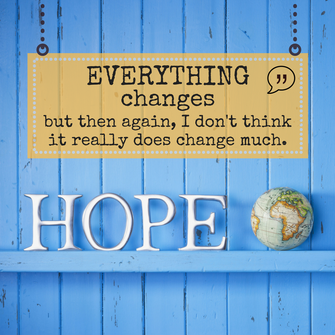 (This blog tells my family's story. To see more, click "blog" at the top of this webpage.) The pneumonia winter gave way to spring before Beth felt well enough to request swimming at the YMCA. She attempted to put on a bathing suit by herself at home, much harder than other clothing, but accepted my help to finish. At the pool, I stayed with her in the water, watching as she floated on her back and waved her arms gently underwater. She stayed in the pool about twenty minutes with frequent breaks at the walls. I lifted her out of the water carefully to avoid scraping her back. Even so, the concrete walls left her lower extremities with abrasions that healed slowly. She wouldn’t consider any kind of protective coverings for her legs or feet, except for a few waterproof bandaids on the worst of the scrapes. Against my advice, Beth sang at tryouts for the high school musical Guys and Dolls. With the pneumonia week in the hospital fresh on my mind, I stressed about her taking on too much. With two of her best friends, Ellen and Jackie, she bypassed the stage steps and took the long way through the choir room to the stage. I drove Beth and Maria to and from rehearsals and we shopped for costumes at Goodwill. When a tornado watch started with a rehearsal underway, I returned to school early to pick them up and hurry to our basement. Ohio’s tornado season escalated in significance for my family. Previously, John would monitor the weather during watches and we very rarely camped out in our partially finished basement. No more. Beth felt compelled to heed every warning and watch at once, so we carried her down the steep basement steps. She couldn’t relax until everyone stayed in the basement, including Timber. The growing parrot sat heavily on her shoulder and played with her hair while she completed homework. When Timber hopped onto the papers in her lap, she prompted with his first words, up up, for him to jump on her hand. One stormy midnight, Beth insisted on a family trek to the basement during a long tornado warning, not a watch. Losing sleep, she admitted her anxiety, similar to her response to the low gasoline light in the car. I offered to find a good counselor for her, but she emphatically declined. A weekday afternoon when Beth stayed home with John, I sat in the bleachers at the softball field and watched Maria play on the high school team. A hard hit ball connected with the head of a girl from the other school. An ambulance drove right onto the outfield with lights blazing and sirens wailing. Maria didn’t hit the ball that hurt the girl, but the ambulance brought back unwelcome memories for both of us. We hugged behind the bleachers in tears. The year anniversary of Beth’s injury approached. |
Cindy KolbeSign up for my Just Keep Swimming Newsletter by typing your email address in the box. Thanks!Categories
All
Archives
November 2022
|

 RSS Feed
RSS Feed





